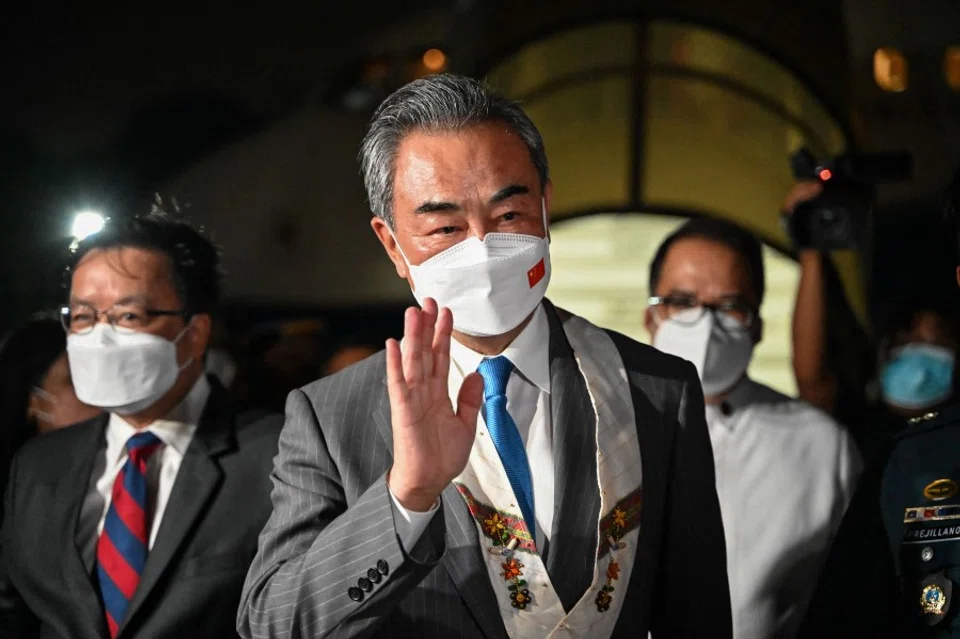Will China's 'Asian way' of building peace for Asia work?

The "Asian way" has been a persistent theme in China's messaging toward its Southeast Asian neighbours in the last decade. Foreign Minister Wang Yi recently restated it at the ASEAN Secretariat on 11 July 2022 as he called for "settling differences in the Asian way" to "blaze a new path of security that chooses dialogue over confrontation, partnerships over alliances, and win-win over zero-sum game".
What does the "Asian way" mean? Does it exist as an objective reality, or is it a Chinese discursive invention in its strategic contest with the US to win over the region?
Consultation, consensus and equality
The "Asian way" started to gain salience in China's strategic messaging in 2013. Then, Manila initiated the South China Sea arbitration case against Beijing. Wang then advised his ASEAN audience that "the most important experience" in ASEAN-China relations is "to stick to the 'Asian way' and the 'ASEAN way' and resolve the differences through friendly consultations and equal-footed [sic] dialogue".
In the Chinese construction, Asian neighbours do not bring each other to court because adjudication is deemed to be confrontational and adversarial. Yet international law experts have debunked this myth by pointing out that Southeast Asian countries "have a positive track record of referring their disputes to the international legal process".
The idea of "negotiation, not arbitration" ensures that China can take advantage of its power asymmetry with the other claimants, rather than having to face them as legal equals before international law.
China's invocation of the "Asian way" seeks to discourage Southeast Asian claimant states in the South China Sea from seeking recourse to the dispute settlement system under the United Nations Convention on the Law of the Sea. Beijing instead insists that the ongoing ASEAN-China negotiation on a code of conduct is more fitting for "Asian values" as they are based on "consultation", "consensus" and "equality".
Such an "equal footing" argument, however, stands on tenuous ground. China has been ramping up its military and para-military power in the South China Sea, jeopardising other claimant states' maritime rights and interests. The idea of "negotiation, not arbitration" ensures that China can take advantage of its power asymmetry with the other claimants, rather than having to face them as legal equals before international law.

In recent years, China has sharpened the "Asian way" discourse as a contrast to US balance-of-power moves to counter Chinese influence in the Indo-Pacific. These include the strengthening of US alliances in Asia and the formation of minilateral arrangements such as the Quadrilateral Security Dialogue (Quad) and the Australia-UK-US (AUKUS) trilateral security partnership.
This, in turn, highlights China's position as a resident power while de-legitimising the presence of any other peer powers, particularly America.
In China's binary framing, the "Asian way" is "inclusive", "harmonious", and "dialogue-driven" whereas the "small circles" created by America and its allies are "exclusive", "confrontational" and "Cold War mentality-driven".
The obverse, however, is true. While praising the "Asian way" as being "inclusive", the Chinese framing exhibits an exclusivist approach to security governance in Asia, emphasising the distinction between Asia and the West. This, in turn, highlights China's position as a resident power while de-legitimising the presence of any other peer powers, particularly America.
Universally 'Asian' values
The "Asian way" is joined at the hip with Chinese President Xi Jinping's 2014 call for "the people of Asia to run the affairs of Asia, solve the problems of Asia and uphold the security of Asia".
This exclusionary vision of the regional order was made starkly clear in Wang Yi's speech at his 2021 special meeting with ASEAN foreign ministers. He called on ASEAN and China to "forge a cooperation circle featuring common development" and to adhere to "independence, self-reliance and self-strengthening". Beijing's parochial regionalism is in effect the inverse of ASEAN's open regionalism, which embraces all powers near and far.
It might be tempting to deconstruct the culturalist underpinnings of the "Asian way" and examine whether there are truly common values shared by the peoples of Asia. China's "Asian way" advocates a culturally deterministic approach to Asia's regional governance by invoking "peace", "mutual understanding" and "harmony" as if these values were intrinsically unique to Asia (or East Asia since China uses these two terms interchangeably). It is fallacious and historically inaccurate to postulate that Asians are inherently peace-loving, and by extension, paint Westerners as war-mongering.

While China presents these values as universally Asian, they are essentially drawn from Confucianism, which seeks to achieve social and political harmony through respect for hierarchy. Beijing sees this as the ideal modus operandi for the Chinese state as well as for the regional order in both ancient and current times. But these hierarchical precepts are at odds with the principle of sovereign equality in today's inter-state system.
Suppression of disagreements and obstruction of legal recourse, however, do not present the way to sustainable peace.
Sustainable peace-building
As a matter of principle, harmony should be achieved through respect for international law rather than through deference to a hierarchy of nations based on their respective size and strength. To "harmonise" its relations with Southeast Asian countries, China has focused on amplifying the positive aspects of economic cooperation while suppressing differences, especially over the South China Sea disputes.
The "Asian way" of saying it is to "shelve the disputes" and "build consensus through dialogue and consultation". Suppression of disagreements and obstruction of legal recourse, however, do not present the way to sustainable peace.
The "Asian way" has gained some traction in Southeast Asia. Most recently, at the Shangri-La Dialogue 2022, Indonesian Defence Minister Prabowo Subianto praised the "Asian way" as a solution to the region's geopolitical woes. He associated it with the Indonesian way of musyawarah mufakat (discussion to reach a solution) and gotong royong (working together).
A Chinese diplomat then followed up on Prabowo's remarks at the forum by contrasting the "Asian way" with "the NATO way or the European way".
Granted, maintaining dialogue is critical to prevent disagreements from spiralling into conflicts. Yet, maintaining dialogue should not preclude a country from other avenues and options to defend itself, including seeking legal recourse, upgrading its deterrence capabilities, and engaging in warfare as a last resort.
When dialogue did not work, China engaged in military conflicts with its neighbours in recent history, including India (1962), the Soviet Union (1969) and Vietnam (1979). Historians also point out that "warfare was constant in imperial China" due to its own disunion, foreign invasion and also territorial conquests. Judging by China's ongoing muscle flexing in its immediate neighbourhood, it is doubtful that a resurgent China today truly believes in or acts on its "Asian way" rhetoric.
This article was first published by ISEAS - Yusof Ishak Institute as a Fulcrum commentary.
